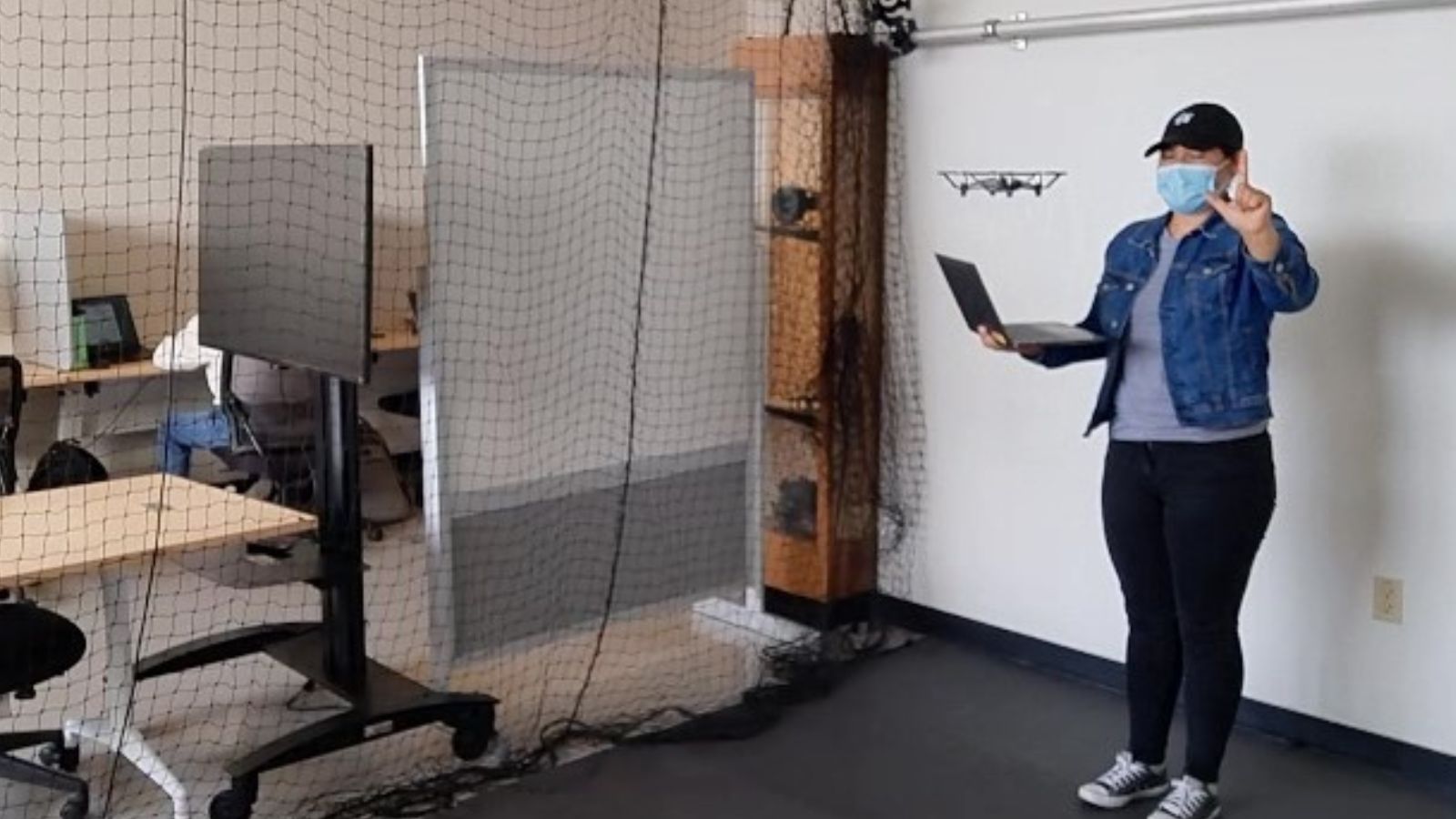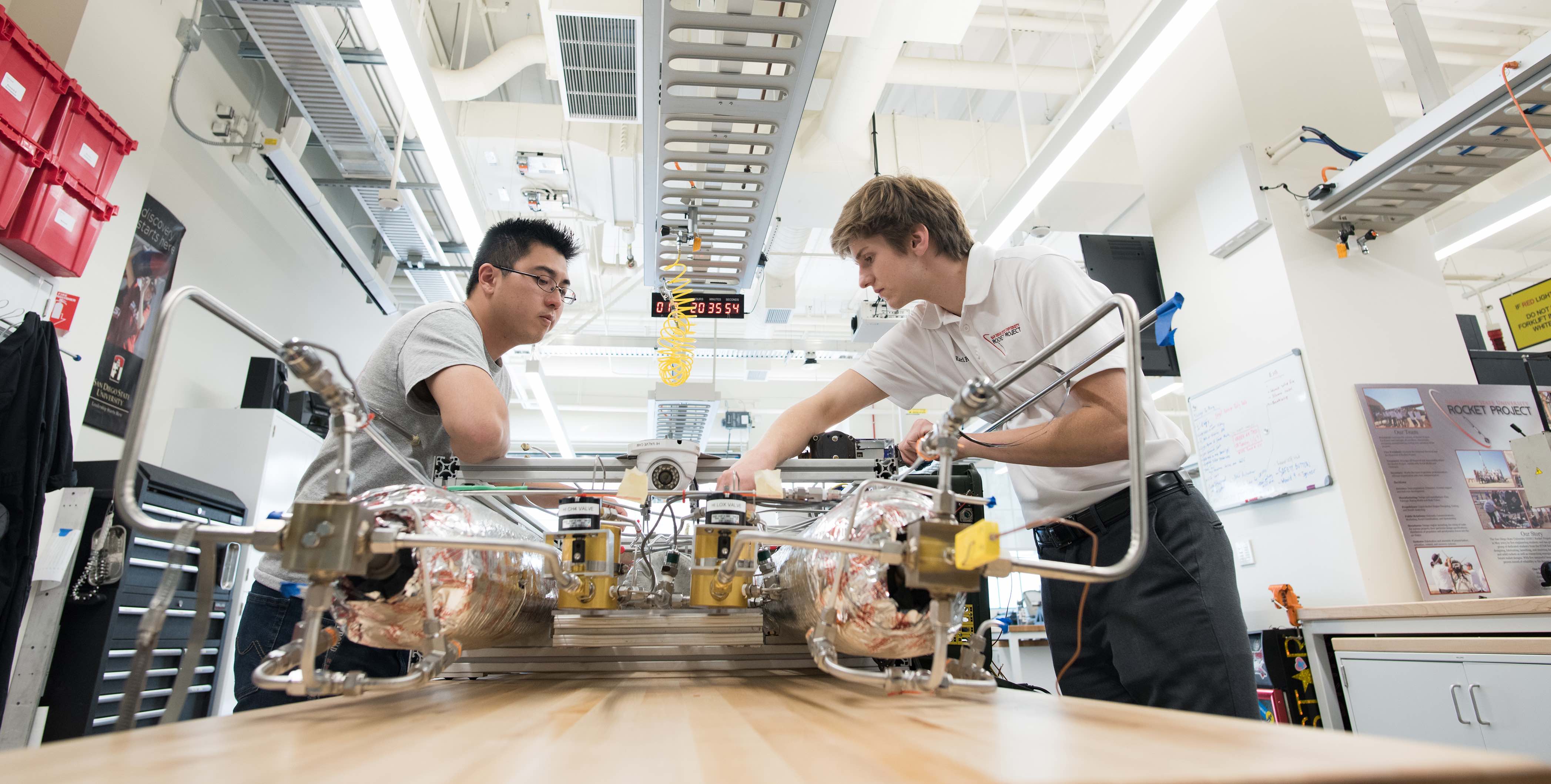STEM Pathways Student Studies Drone Hand Gesture Recognition

STEM Pathways researcher and incoming Fall '23 transfer student Roxana Nevarez spent her summer working with Dr. Junfei Xie on controlling a drone through hand gesture recognition. Read her reflection below.
Video courtesy of Roxana Nevarez"The video demonstrates my ability to control a drone through hand gesture recognition. The right side of the video shows what a person would see if they were to be standing in the room with me at that moment. Meanwhile, the left side of the video displays what the drone captures while executing the hand gesture recognition code. As the drone categorizes my hand gesture into one of the programmed and trained gestures, the drone will move accordingly, i.e., if I place my hand in front of the drone with all my fingers in an upward position, exposing my palm, the drone’s camera will scan and classify the hand gesture as the “forward” command, and that would cause the drone to move forward. Though the hand gesture controls shown in the video successfully command the drone to perform basic movements, simply knowing that a drone can be controlled through hand gesture recognition creates an endless number of possibilities. As technology continues to improve and research on this topic becomes more profound, scientists will have the opportunity to program different hand gestures that will allow the drone to execute more elaborate commands, and in turn, that would benefit more companies or people that have an interest in taking advantage of a drone’s capabilities.
Dr. Xie was a fantastic mentor throughout my summer research experience. I am incredibly grateful for the opportunity she gave me to work in her lab and for her endless support this summer. Working on this research project with the help of Dr. Xie’s mentoring, our emphasis was to understand machine learning and deep learning and acknowledge the impact that both concepts have on improving the efficiency of unmanned aerial systems. The primary focus of this work was not to necessarily increase the areas or fields where unmanned aerial systems can be used, though that may be an outcome given that positive results were achieved. Instead, the primary focus of our work was to improve the efficiency of unmanned aerial systems so a larger amount of people can receive the benefits of utilizing unmanned aerial vehicles without involving extensive learning requirements or financial investments."
Learn more about the STEM Pathways Program here.

